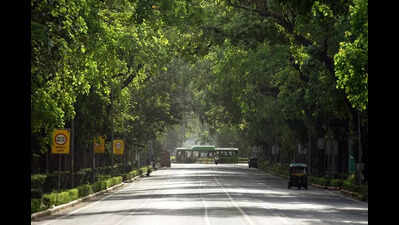New Delhi: Delhi govt is reviewing its tree transplantation policy to improve the survival rate of transplanted trees. Environment minister Manjinder Singh Sirsa said on Friday that only agencies with tree transplanter machines capable of uprooting trees with intact root balls might be empanelled for better results. Empanelled agencies currently use backhoe loaders to uproot the trees for shifting. The process damages the roots and, at times, causes ‘transplant shock’ — stress to a plant after it is moved to another location. However, a tree transplanter machine carefully digs out and lifts entire trees along with their roots and soil without causing much damage.The forest department’s data shows that the survival rate of transplanted trees in the city is low. Of the 1,357 trees transplanted between 2019 and 2022, only 578 (42.5%) survived. The current policy says a minimum of 80% of the trees affected by a development or construction project will be transplanted, and 80% of them must survive.Sirsa told TOI, “We are reviewing the tree transplantation policy to save the maximum number of trees. We are planning to bring in equipment such as tree transplanter machines. When an agency approaches a tree officer for felling permission, it will be ensured that the maximum number of trees are transplanted using the right equipment.”He added that the policy would be reviewed so that a tree officer could decide whether a tree could be transplanted, depending on its size or weight. Referring to a presentation of Indian and foreign-made machines, the minister said, “Two options are being looked at — either they are bought or agencies are asked to hire them.”The forest department also plans to engage experts to provide scientific oversight. The tree authority of Delhi stated in a meeting this Jan that the committee for the review of the 2020 policy had been constituted. “The chairman of the tree authority directed that Forest Research Institute, Dehradun, may be co-opted… as an expert organisation for providing scientific inputs,” stated its minutes.Tree activist Bhavreen Kandhari said, “The science of tree transplantation cannot be one size fits all, globally. In Delhi, it often fails because it’s the big old trees that are moved with poor technique and planted in wrong places and then not cared for in the harsh climate. Large trees with deep tap roots (like neem, peepal, jamun) rarely survive once uprooted. Saplings or younger trees could fare better, but they are less commonly transplanted.“She added that in crowded Delhi streets, moving a large root ball is extremely challenging. “Delhi’s soil is often hard and compact, and machines cut through roots roughly, so transplanted trees lose much of their root system and cannot absorb water properly afterward. Trees are also often dumped in barren patches, roadside medians or congested spaces.”











